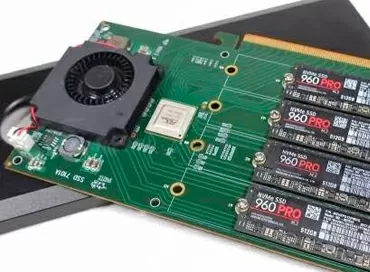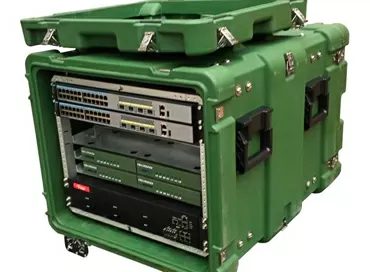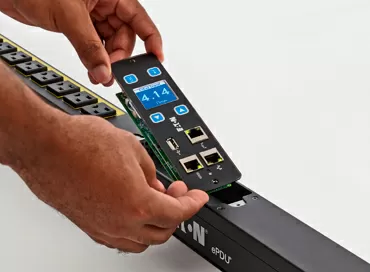Dell server buying guide
Over the past few months, Dell has meticulously refined its PowerEdge server lineup, adding reliability, performance, and the ability to easily handle heavy loads for x86-based machines. Here is an article that will tell you what the Dell server market has to offer at the moment.
A little more about the new Dell servers
A few months ago, Michael Dall's company made some major changes to their PowerEdge server series. As usual, the changes were made to improve reliability, resistance to high loads and increase performance.
The upgrade covered three types of products: in March 2010, Dell updated the two-unit PowerEdge models, the M610 and M710 blade server models fall under this definition; PowerEdge R410, PowerEdge R510, PowerEdge R610, and PowerEdge R710 rack models, and PowerEdge T410, PowerEdge T610, and PowerEdge T710 tower servers. All listed machines are based on Intel Xeon 5600 processors.
Three more models followed shortly thereafter & ndash; PowerEdge R810, PowerEdge R910 and M910, they got at their disposal the latest Intel processors based on the Nehalem-EX core - Xeon 7500 and 6500. In order not to offend Intel's main competitor with a lack of attention, Dell released the R815 rack server based on AMD Opteron 6100 processors.
Then Dell introduced three new products in June 2010.
Dell Enriches its PowerEdge Server Portfolio Again with the Presentation of Blades; The M710HD and M610x as well as the AMD-based R715 rack server, ”said Armando Acosta, Principal Consultant for Dell's Quad Rack Server Line. "The new machines come with many unique features and great design."
In terms of flexibility, virtualization and management bells and whistles, the consultant says that, for example, FlexMem Bridge technology allows users to improve server scaling by increasing the amount of memory as needed (in if the amount of memory is more critical for your tasks than processor performance). FlexMem Bridge technology primarily leverages and extends Intel's existing connections from two installed processors to DIMM channels that would normally be available with all four processors installed.
Fault-tolerant virtualization is based on an embedded hypervisor (operating system management program) to accelerate system deployment and overall virtualization performance. The company offers two factory-built hypervisors from the leading vendors (Citrix XenServer and VMware ESXi 3.5), which means you get a fully configured Dell PowerEdge server, tested and ready to deploy in an enterprise environment.
Finally, Dell's built-in Lifecycle Controller provides IT administrators with a single console view of their entire server infrastructure. The development also facilitates server maintenance, it provides the administrator with tools for working with updates of a particular system, machine configuration or diagnostics.
Model selection
Dell's renewed server lineup offers a variety of attractive models to choose from. Want to buy a server? Let's go through the different categories.
Dell Rack Servers (rackmount)
Dell has a variety of rackmount servers in its arsenal, ranging from lightweight and inexpensive to heavy duty, heavy duty. And some models are "sharpened" for specific tasks.
"Dell provides a range of rack-mount servers that have been tested and optimized for database applications such as Microsoft SQL Server 2008 or Oracle," says consultant Acosta. “These rack servers are ideal for departmental environments, networking infrastructure, Web applications, data centers, or mission-critical business tasks.”
For example, the PowerEdge R710 is a 2U rack server based on Intel Xeon 5500 and 5600 processors. It is equipped with up to 18 DIMM slots and can accommodate up to 192 gigabytes of RAM. It also comes with four integrated network ports and four PCIe Gen 2 slots. Acosta believes this machine is ideal for virtualization applications.
The PowerEdge R815 is based on AMD 6100 chips. The server has an interactive LCD display and diagnostics. It is equipped with hard drives with a maximum total capacity of three terabytes, a maximum total of 256 GB of RAM and is capable of withstanding the strongest loads.
For even more demanding tasks, Dell offers a high-performance four-unit (4U) monster PowerEdge R910. Such a server can be equipped with four eight-core Intel Xeon 7500 processors and 1 terabyte of RAM.
Dell tower servers (piedestal)
Dell towers are general purpose servers that can serve small businesses (remember, small business in the West means a firm with fewer than 50 employees) and handle, say, with medium database loads. The PowerEdge T410 is a low-cost yet flexible 2-unit server that can operate in remote offices where there is no room for a separate large server room - this machine is only 60 centimeters deep. It uses Intel 5500/5600 series processors, comes with up to 64GB of RAM and up to 6TB of hard drives (SAS or SATA).
The PowerEdge 610 has more horsepower under the hood, and of course this fact means an increase in cost. This server is also designed for small and medium-sized businesses and is perfect for remote offices and departments (branches of a large company). It is made in 2U format and is based on Intel 5500/5600 series processors. In terms of RAM and disk space, this model offers 96 GB (RAM) and 8 TB (HDD), respectively.
The PowerEdge 710 belongs to the flagships of Dell's tower line. It is aimed at tasks that demand productivity and machine resources. The server is built on Intel Xeon 5500/5600 processors and comes with 144GB of RAM and up to 8TB of disks.
Dell Blade Servers
Two good candidates for "blades" are the M910 and M710.
The PowerEdge M910 is a maximum height quad-bay server blade ideal for virtualization or mainstream applications. At the core of the machine are powerful Intel Xeon 7500 or 6500 processors. The increase in the amount of RAM in such a server is limited to 512 gigabytes.
The second model, the M710, is also a maximum height server blade with plenty of memory and multiple I / O options. These machines are great for virtualization and datacenter environments - they deliver excellent energy efficiency (performance per watt). This model is equipped with dual- or quad-core Intel Xeon 5500/5600 processors, eighteen DIMM slots (which can accommodate up to 144GB of memory) and 1.2TB storage.
When it comes to the efficiency of servers using the latest Intel processors (like the Xeon 5600), says Charles King, an analyst at Pund-IT, “Dell customers will get more performance, more security, and reducing energy consumption. ”
"Dell says datacenter owners will improve their energy efficiency with the new processors," King says. “Well, that's true. Dual-unit servers using low-voltage Intel Xeon L5640 processors with the same performance consume about 30 percent less power than comparable models based on the previous generation Xeon X5570 processors. ”
The servers listed in the table are no longer available. When buying a used one. servers, we recommend that you read our article guide for buying used servers .
Summary table of Dell server models
|
Title |
Tower Servers |
Rack Servers |
Blade Servers |
|
By appointment |
General purpose servers offering remote management capabilities, deployment flexibility, and good scalability. Perfect for small and medium sized businesses (SMB) and branch needs of large companies. Also, these servers can provide work with databases. |
Also suitable for branch offices, ideal for network infrastructures, web applications, data storage and processing, and for companies with high performance requirements . |
Designed for environments that require the consolidation of computing resources to increase efficiency, for mainstream front-end applications, virtualization, and environments requiring increased energy efficiency. Not a problem for such servers and high-capacity network infrastructures, Web applications, and so on. These servers are excellent for handling memory-intensive applications. |
|
By type of processor used |
Intel Xeon 5500 and 5600 series processors, dual- and quad-core Intel Xeon, Intel Celeron (D), Intel Core Duo 2, Intel Pentium D (dual-core), dual-core and quad -core AMD Opteron |
Latest Intel Xeon 5600 & ldquo; Westmere-EP & rdquo;, Xeon 7500 and 6500 “Nehalem-EX” processors and new AMD 6100 Opteron |
Intel Xeon 5500, 5600, 7500 and 6500 series processors and new AMD 6100 Opteron |
|
By operating systems |
Windows Server, Red Hat Linux, SUSE Linux, Solaris, VMware, Microsoft Hyper-V, Citrix XenServer |
Windows Server, Red Hat Linux, Red Hat Linux, SUSE Linux, Solaris, VMware, Microsoft Hyper-V, Citrix XenServer |
Windows Server, Red Hat Linux, SUSE Linux, Solaris, VMware, Microsoft Hyper-V, Citrix XenServer |
|
By Model |
PowerEdge T110
|
PowerEdge R910
|
PowerEdge M910
|
|
Starting price |
From 449 $ |
From 749 $ |
From 1429 $ |
Andrey Baks
20 / 01.2011













